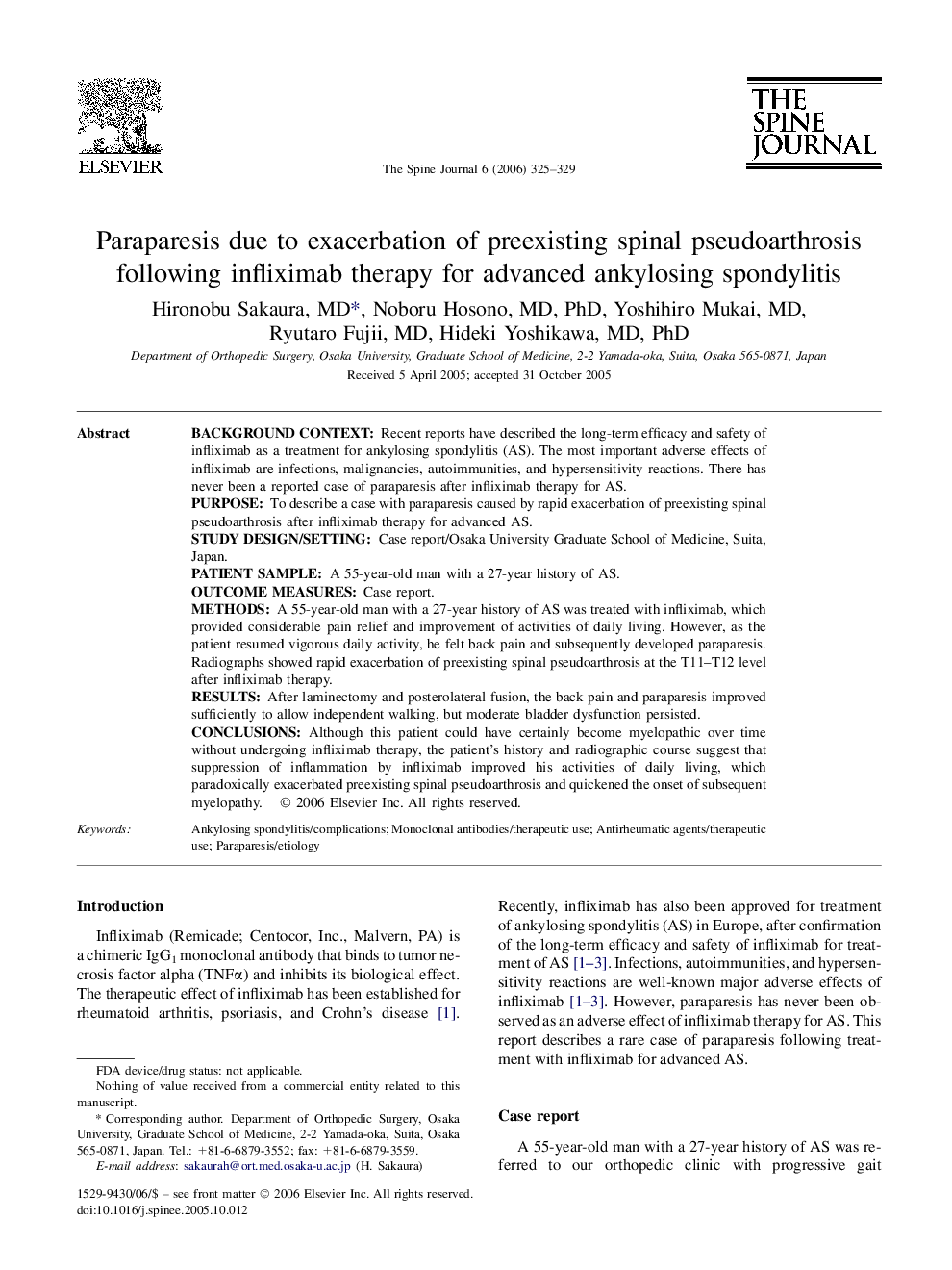| Article ID | Journal | Published Year | Pages | File Type |
|---|---|---|---|---|
| 4100353 | The Spine Journal | 2006 | 5 Pages |
Background contextRecent reports have described the long-term efficacy and safety of infliximab as a treatment for ankylosing spondylitis (AS). The most important adverse effects of infliximab are infections, malignancies, autoimmunities, and hypersensitivity reactions. There has never been a reported case of paraparesis after infliximab therapy for AS.PurposeTo describe a case with paraparesis caused by rapid exacerbation of preexisting spinal pseudoarthrosis after infliximab therapy for advanced AS.Study design/settingCase report/Osaka University Graduate School of Medicine, Suita, Japan.Patient sampleA 55-year-old man with a 27-year history of AS.Outcome measuresCase report.MethodsA 55-year-old man with a 27-year history of AS was treated with infliximab, which provided considerable pain relief and improvement of activities of daily living. However, as the patient resumed vigorous daily activity, he felt back pain and subsequently developed paraparesis. Radiographs showed rapid exacerbation of preexisting spinal pseudoarthrosis at the T11–T12 level after infliximab therapy.ResultsAfter laminectomy and posterolateral fusion, the back pain and paraparesis improved sufficiently to allow independent walking, but moderate bladder dysfunction persisted.ConclusionsAlthough this patient could have certainly become myelopathic over time without undergoing infliximab therapy, the patient's history and radiographic course suggest that suppression of inflammation by infliximab improved his activities of daily living, which paradoxically exacerbated preexisting spinal pseudoarthrosis and quickened the onset of subsequent myelopathy.
